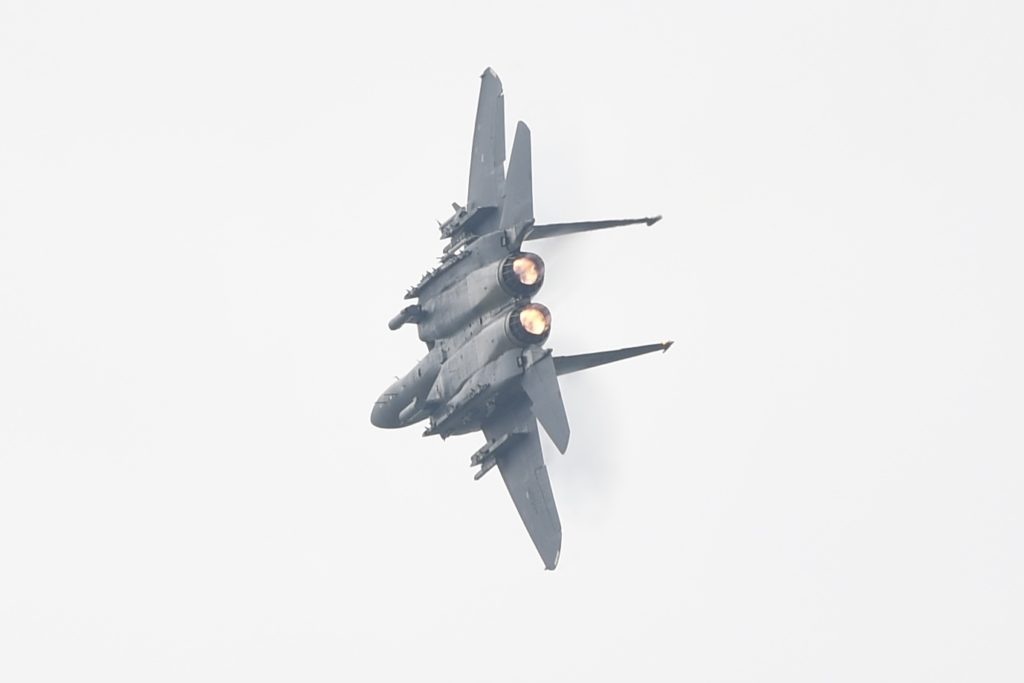
BREAKING: SJAFB losing a fighter squadron
Future F-15E cuts included in the National Defense Authorization Act that was approved by Congress — and signed into law by President Joe Biden — will impact Seymour Johnson Air Force Base in the coming months.
The 4th Fighter Wing confirmed, moments ago, that the 333rd Fighter Squadron will soon be deactivated.
And while it remains unclear just how many airmen — and aircraft — SJAFB will lose as a result of the decision, the “Lancers” are not the only ones who will be affected.
The 335th Fighter Squadron, known as the “Chiefs” and currently one of the 4th’s two operational fighter squadrons, will become a training squadron in 2025.
“The recently approved divestment of some F-15E aircraft will result in the restructuring of our fighter assets,” 4th Fighter Wing Commander Col. Lucas Teel said in a statement provided to New Old North. “The Air Force is evolving and changing the way we do our war fighting business, and the 4FW looks forward to playing our part in that process.”
Community leaders, airmen, military spouses, and business owners have told New Old Norththey have been on edge since Air Force brass recommended that the USAF be authorized to cut its F-15E fleet by more than 100 aircraft, leaving just 99 Strike Eagles in an inventory that currently boasts 218.
North Carolina Sen. Ted Budd saw the writing on the wall — understanding that the divestment could spell disaster for Seymour Johnson Air Force Base, one of the most significant military installations in his state — and attempted to derail the move, by inserting language into the Senate version of the National Defense Authorization Act that stipulated “none of the funds authorized to be appropriated by this Act or otherwise made available for any of fiscal years 2024 through 2029 may be obligated or expended to divest any F-15E aircraft.”
Ultimately, his efforts fell short, and the final version of the Department of Defense spending plan approved by Congress and signed into law by Biden allowed for 68 of the dual-role fighters — more than 31 percent of the Air Force’s active fleet — to meet the chopping block by the end of 2029.
The move was telegraphed July 11 by Air Force Chief of Staff Charles Brown Jr. when, during a two-hour testimony he delivered before the Senate Armed Services Committee, the general talked about “modernization efforts” outlined in the DOD’s “Report on Force Structure Changes for the Fiscal Year 2024 Defense Budget” — and outlined his desire to retire Strike Eagles while adding additional F-35 Lightning IIs and F-15EXs to the Air Force’s fleet.
His belief is that backfilling the fleet with more than 100 F-15EXs, a two-seat fighter with a stronger airframe and a 28-percent larger payload capability, is the most prudent path forward.
Just how and when the 4th Fighter Wing was notified of the impending deactivation of the Lancers has not yet been disclosed, but according to the plan approved in Washington, before any aircraft is retired, the Secretary of the Air Force will be required to submit a report to Congress’ defense committees that includes:
• A description of each proposed divestment by fiscal year and location.
• An explanation of the anticipated effects of such divestments on the missions, personnel, force structure, and budgeting of the Air Force.
• A description of the actions the secretary intends to carry out to mitigate any negative effects of such divestments.
• A description of the actions the secretary intends to carry out to modify or replace the missions and capabilities of any units and military installations affected by such divestments.
• An assessment of how such divestments may affect the ability of the Air Force to maintain minimum tactical aircraft inventories.
And just what the future holds for the Strike Eagles that remain housed at SJAFB is, at current, unknown — although Teel made it clear that when it comes to training the next generation of F-15E aircrew members, the Goldsboro base would remain the “home” of that mission.
“We sincerely appreciate the community’s continued support of our Airmen and mission,” the colonel said. “Seymour Johnson will remain the home of the F-15 training enterprise for years to come.”
Note: This is a developing story. For more updates, as they become available, follow New Old North.

A loaded discussion

Fighting for their lives

Goldsboro loses a giant

“I’m a flippin’ hurricane!”
Public Notices — Dec. 14, 2025

Belting it out

Legendary

Final Four!


